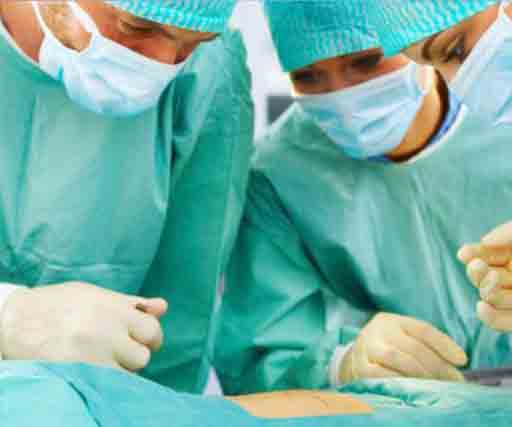> : Taking a leaf out of history, Dr Ajaya Kashyap reconstructed nose of a gunshot victim from Afghanistan
> : Shamsa can now smell and breath normally almost after four years
INVC NEWS
New Delhi ,
Setting a fine example of medical excellence Dr Ajaya Kashyap, renowned plastic surgeon of the country, reconstructed the nose of a 28-year-old gunshot victim from Afghanistan, using techniques described by Sushruta 3000 years ago.
Shot at the age of 24, though Shamsa (name changed to protect the identity) was fortunate to have survived the attack, but lost most part of her nose, her ability to breath and smell, to interact normally with the people and her self-confidence.
Four years ago the destiny struck her at such a crucial age when she was about to get marry and settle down. But as it is said, morning soon follows when it gets too dark, for Shamsa also, the decision to get a plastic surgery changed everything. After much thought, the family travelled all the way to India and here, after successful nose reconstruction surgery, her life is eventually back on the track.
And just like the story of Shamsa, the treatment she received in India was also exceptional.
Commenting on his unique surgical approach Dr Ajaya Kashyap, Medical Director, KAS Medical Centre and MedSpa said, “We often fail to take pride in the fact that some most advanced and modern surgical procedures, like plastic surgery, have their roots in India. Like Sushruta’s techniques, which are so precise and scientifically accurate that they could be used even today for nose and ear reconstructions, all we have to do is to modify them to sync with latest treatment modalities. In this particular case, I took skin from Shamsa’s cheeks for the surgery and nose reconstruction, following the techniques described by Sushruta.”
However, considering the complications which usually involves in such cases, the procedure requires great precision and expertise. Explaining about the complications and challenges he faced in the surgery Dr Kashyap said, “When it comes to facial reconstruction surgeries, along with addressing associated medical issues, we also need to take care of its cosmetic aspects. As in this case, the challenge was to reconstruct a major part of the nose without creating further scars. To avoid this, we had to take tissues from inside of the cheeks to reconstruct flaps for nasal septum and nasal passage, which is a tedious procedure. But all the effort was worth taking as we managed to give the patient the exact results she wanted.”
The family is extremely happy after the surgery as they were not expecting such wonderful results, that too in such a short span of time. Shamsa, who only speaks her native language, shares her experience taking help of a translator, “Getting shot could be among the worst experiences of the life. While shootings are fairly common in our country, for survivors it is always hard to get over the psychological and physical trauma, especially if it comes with the added horror of disfiguration and amputation. I cannot express in words how blessed I feel today to be able to talk, smell and breath normally after four years. This surgery not only changed my entire life, but I believe it may motivate many others back home to take such expert medical help.”
The technique used by Dr Kashyap in her reconstruction surgery was first introduced by the “Father of Plastic Surgery” Sushruta, some 3000 years ago. As matter of fact, Sushruta is a celebrated Indian physician known for his role in the advancement of medicine in ancient India, particularly in nasal reconstruction. While his teaching of anatomy, pathophysiology, and therapeutic strategies are extraordinary, his contributions in the field of the nose and ear reconstruction surgery can be traced throughout the medical literature, spanning from the Vedic Hindu medicine to the modern-day surgical practices 1.














